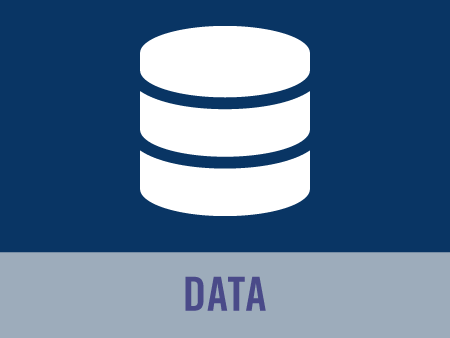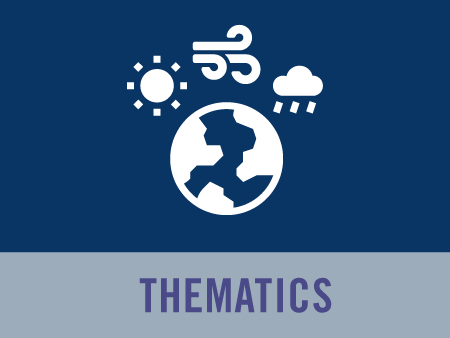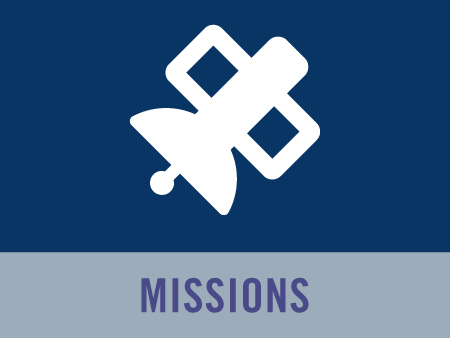Integrated Ocean Waves for Geophysical and Other Application
If you need information about some sea-state related parameter, chances are that IOWAGA can provide it to you, and chances are that you will not find a more accurate estimation elsewhere. The project team is particularly working on the use and interpretation of novel data sources (from satellites, stereo-video cameras, seismometers) and the improvement on numerical wave models.
Waves and seismic noise
Indeed, ocean waves cause the Earth surface to shake with typical periods of 3 to 10 seconds and amplitudes of a few microns. These microseisms are recorded anywhere on Earth, even very far from the ocean, because these seismic waves can travel very far. Before IOWAGA, there was no general knowledge of the magnitude and spatial distribution of the sources of this noise. With specific developments to model the reflection of waves at the shoreline, IOWAGA has produced maps of noise sources for the past 18-years. These maps reveal that the strongest noise sources are in the middle of ocean basins, in particular in the North Atlantic. This noise can be used to record the arrival of swells at the coast and to measure the height of waves at sea. That latter application, however, requires some knowledge of the noise sources, such as provided by the model. Indeed, “loud noise” does not always mean “big waves”. This better knowledge of the noise sources can now be used to interpret trends in the seismic noise records that can be linked to a change in ocean storminess. It should also lead to a better knowledge of the Earth structure by allowing the use of seismic noise for a mapping of the attenuation of seismic waves, which is related to spatial patterns of temperatures in the Earth's crust and upper mantle.
Improved predictions of waves and their effects: energy dissipation, icebergs,nearshore currents
Because we understand better the evolution of waves, from their generation in big storms to their dissipation at the shoreline, the IOWAGA project is helping weather forecasting centers to better predict wave heights. This has lead to a considerable improvements in the forecasts performed by Meteo-France, the Previmer system (www.previmer.org) or the Argentine Navy, with an error reduction by 20% thanks to the better dissipation. The U.S. Weather service (NOAA/NCEP) is currently implementing this change for their next operational systems upgrade. All these developments are included in the WAVEWATCH III®model, distributed by NOAA/NCEP, and will benefit thousands of users around the world. Today, the most accurate forecasts for waves from 3 to 6 days ahead are provided by Previmer, as a demonstration of the improvements that are possible when better knowledge is put to work. Recently, IOWAGA has introduced the effects of the thousands of kilometer-size icebergs that act like break-waters in the southern ocean, reducing wave heights in specific areas. The French space agency (CNES) is now sponsoring an extension of the iceberg detection effort, that will provide real-time maps of small icebergs for use in wave forecasts. Work in IOWAGA has also been related to the way in which waves create currents near the shore.
New applications
Beyond the wave heights, the improved wave model is also now capapable of providing realistic estimates of many other parameters. One of them is the roughness of the sea surface (know by specialists as the “mean square slope”), which is a key parameter in many remote sensing applications. The results from the IOWAGA model are now used by NASA in the processing of the Aquarius instrument on board the SAC-D satellite, in order to correct the effects of waves in the estimation of sea surface salinity (https://www.nasa.gov/mission_pages/aquarius/main/index.html). The models also provide estimates of wave energy resources, bottom agitation …
The future
Among the emerging new application, the IOWAGA team is currently developping ways to estimate statistics of breaking waves.For this, stereo-video imagery is used to calibrate numerical wave modelling results. This effort will be combined with measurements of greenhouse gas concentration, thanks to the support of the European Space Agency via the Oceanflux project (http://www.oceanflux-ghg.org/ ) to improve our knowledge on the exchange of CO2 between the atmosphere and ocean.










